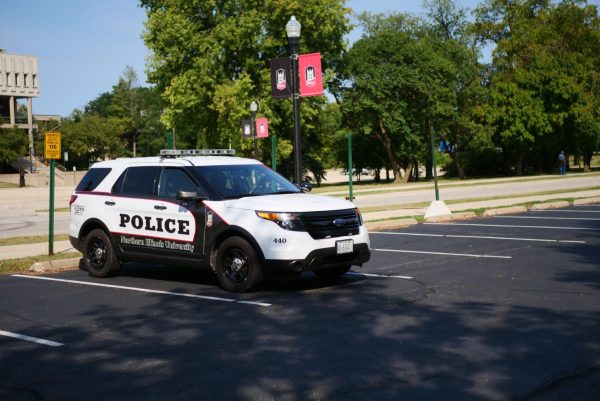Working for a living
November 19, 2002
Note: This is the first in a three-part series about NIU students who have to work their way through school.
With tuition costs and student fees rising, many students find that holding one or more part-time jobs while in school is necessary to stay financially afloat.
But job schedules and the schedule of a full-time student can conflict. The balancing act for those who must work can be difficult.
“Not only do I have a part-time job, but I have classes,” said Stephanie Christian, a senior journalism major. “I have student organizations that I belong to, and that becomes tricky trying to juggle all those — especially when there’s a lot of demanding group work in other classes.”
Part-time jobs have become an expected part of the college experience for many people, however. Luckily, many local businesses that hire student workers understand that setting priorities can be difficult for them and allow students to set their own schedule.
NIU has been a more understanding employer by allowing schedule flexibility.
Kimberly Woodard, a senior journalism major who works as a front desk manager at Grant Towers, said setting her own schedule allows her to fit in the required number of hours she needs to hold the job. She said there are other perks, too.
“Since I’m a supervisor, all I have to do is supervise and make sure everything is intact,” she said. “I do bring books with me to work so that I can read while I’m there when there’s nothing going on, or maybe start on a paper. It’s kind of easy to juggle in that way.”
Not everyone is able to make their schedules work, though.
Tracey Kelley, a senior media studies major, has an 18-hour course load this semester with an additional six hours of lab time. She had to quit her job to make time for class work.
“I have a lot of production classes and labs,” she said. “[My classes] were just taking up every single moment I had, so I was unable to make even my reduced [job] hours.”
So, what happens to students who can’t find time to work while they’re in school?
“Hello loans,” Kelley said.
About 43 percent of students in Illinois public four-year colleges leave school with loan debt, according to the Illinois Board of Higher Education. This figure is up from 29 percent in 1991. On average, these students have accrued $14,000 in debt by their fourth year of school.
The good news for Illinois students is that they have fewer loans than the national average. The Economic Policy Institute, an independent research group in Washington, D.C., reported that nationally 59 percent of graduating seniors leave school with thousands of dollars in loan debt.
In order to fully evaluate this trend, the IBHE has created a committee on affordability. In one year, the committee should come up with some hard figures on the accessibility of higher education for low-income families, and some suggestions about how to improve the situation in Illinois.













